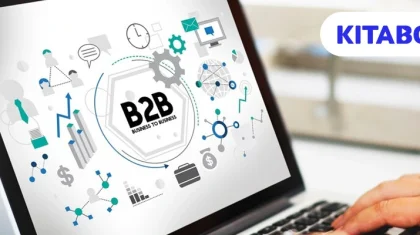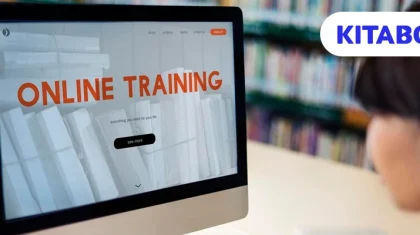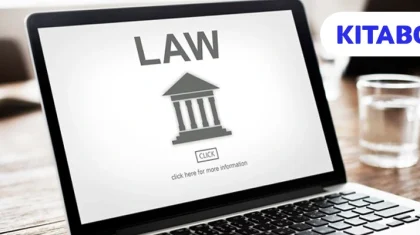Beyond Textbooks: How Educational Content Management is Changing the Game
Textbooks have become outdated!
It fails to captivate the present generation in harmony with technological advancements. Educators and learners are no longer constrained to a single room; the realm of education has expanded to our fingertips. The accessibility and delivery of education have transformed, thanks to the advent of educational content management.
Let’s delve into how technology has once again asserted its dominance, this time in the education industry.
Table of Contents
I. What is Educational Content Management?
II. LMS Vs LCMS
III. Impact of COVID-19 on Education
IV. Is eLearning Better Than Textbooks?
- Incorporates Teacher Tools
- Provides Analytics for Every Student
- Ability to Create a Variety of Content
- Convenient
- Seamless Management
- Time-Saving
- Cost Effective
V. Conclusion
What is Educational Content Management?
Educational content management refers to the creation, storage, and distribution of educational content in an organized way. It serves as a platform that allows educators to author, host, and securely store educational content that students can access.
It surpasses traditional classrooms by incorporating videos, educational games, and augmented reality, thereby creating an interactive learning experience.
Educational content management comprises two distinct types, namely Learning Management Systems (LMS) and Learning Content Management Systems (LCMS), frequently confused due to their similarities.
LMS Vs LCMS
LMS primarily focuses on the delivery and management of content rather than its creation. On the other hand, LCMS prioritizes content creation and administration. Organizations and educational institutions entering the realm of eLearning often choose either LMS or LCMS.
However, there are integrated software solutions that encompass both LMS and LCMS functionalities, seamlessly bridging content creation and delivery processes. If you’re in search of a platform that combines both content creation and delivery, KITABOO is an option that provides a comprehensive solution.
Impact of COVID-19 on Education
We’re familiar with how COVID disrupted learning in classrooms, altering education forever. Statistics indicate that 97% of college students transitioned to eLearning during the COVID-19 pandemic. Despite initial skepticism and a lack of prior experience with online education, perceptions have shifted.
Approximately 70% of students now express that online teaching is either equally as good or even better than traditional live classes. As a result, many businesses have started offering online lessons, and an increasing number of students prefer this mode of learning over the traditional classroom setting.
Higher education has undergone a significant shift towards online education, with numerous educational institutions transitioning to online formats.
Is eLearning Better Than Textbooks?
Let’s face it: the tactile experience of flipping through the pages of a textbook holds a special charm for many of us.
However, statistics predict that the number of eBook readers will exceed 1.1 billion by 2028! Surprising, isn’t it?
Despite the advent of technological advancements, people continue to appreciate traditional methods. eBooks with their magnetic appeal, seem to have successfully surpassed conventional textbooks.
Here’s why educational content management is leading the game:
1. Incorporates Teacher Tools
Students disliked eLearning in the beginning, but with the arrival of many tools, the classroom experience is now available at our fingertips. These tools enhance the learning experience, preserving the genuine classroom feeling and making it more demonstrative.
We at KITABOO, a digital textbook platform, offer an array of teacher tools, including Jamboards, flashcards, pen tools, and other AI assistance, to simplify the teaching process. eLearning becomes exceptionally interactive and establishes a connection between teachers and students through the utilization of these tools.
2. Provides Analytics for Every Student
In a classroom setting, keeping a close eye on every student and tracking their individual performance can be challenging. Learning analytics offers insights into each student’s behavior, revealing details such as the time they spend and areas where they may struggle.
This data proves invaluable for teachers as it enables them to provide targeted assistance to students based on their specific needs. Teachers can group students according to their performance levels and tailor lessons to address individual requirements.
KITABOO further enhances this process by offering a student’s learning curve, providing a comprehensive insight into their overall performance.
3. Ability to Create a Variety of Content
While traditional teaching methods, such as teachers using boards, can be interesting, not everyone remains fully engaged. This is where educational content management takes the lead once again.
Interactive videos prove to be an effective means of capturing student attention. Gamification emerges as one of the most effective strategies for facilitating learning. Not everyone responds well to traditional teaching methods, like reading from a book, but when learning is infused with fun elements, it becomes more appealing to a broader audience.
KITABOO enables the integration of Augmented Reality (AR) and Virtual Reality (VR), aiding students in visualizing concepts more effectively.
4. Convenient
One challenge with live classrooms is that if you drift away for a moment, you may miss the topic, and sometimes, the pace is faster than what we might need.
In eLearning, this is not an issue; you can easily pause and learn at your own pace. You have the flexibility to access the content whenever you want, even at 2 AM if you feel like learning.
Being a digital textbook platform, KITABOO provides the option to have eBooks read out loud, adding an extra layer of convenience for users. It also provides the option to download eBooks, allowing you to read them even when you’re offline.
5. Seamless Management
Gone are the days when managing all your notes was a challenge. Educational content management simplifies the process by consolidating all resources in one place. Educators no longer need to worry about losing any of their materials; everything can be stored centrally, ensuring easy access for everyone.
6. Time Saving
With accessibility 24/7, it saves time as students can learn at their convenience. Traditional teaching for an entire class can be time-consuming.
This is where personalization plays a crucial role; there’s no need to spend time with students who excel academically, and repetitive teaching of the same topic is minimized when students can easily access it.
7. Cost Effective
While the initial investment may not be inexpensive, it represents an investment in the future. Implementing such a system can reduce ongoing expenses associated with instructors.
Once stored, the content remains accessible, even after many years, leading to a reduction in long-term teacher-related costs.
Conclusion
Education is evolving, and embracing eLearning is crucial for meeting the needs of the modern generation. The future of learning is undeniably shaped by technology, with eLearning leading the way in making education more accessible and efficient. It not only adapts to the evolving needs of education but also champions a new era of interactive and personalized learning.
In this dynamic shift, a digital textbook platform like KITABOO emerges as the key to seamlessly hosting, creating and delivering content.
Write to us at contact@kitaboo.com, and we’ll be happy to assist you.
Discover how a mobile-first training platform can help your organization.
Kitaboo is a cloud-based platform to create, deliver & track mobile-first interactive training content.



